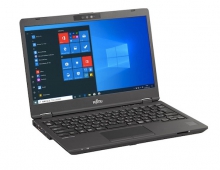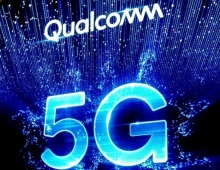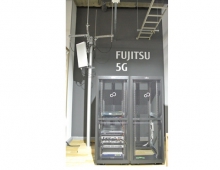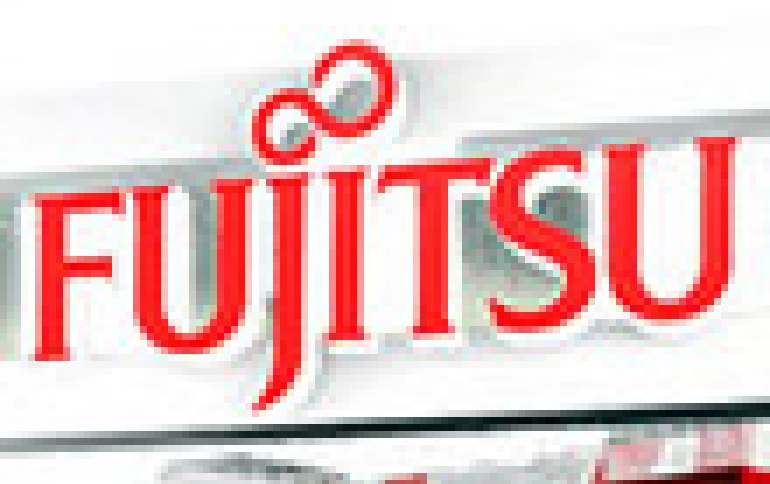
Fujitsu Technology Recognizes Faces Appearing In Low-Resolution Images
Fujitsu has developed a technology that provides highly accurate detection of people's movements and that can recognize the flow of people from low-resolution imagery incapable of distinguishing faces. In existing systems that analyze video taken from surveillance cameras, the video resolution should be high enough in order the system to identify individuals. Typically, in order to extract information on flows of people appearing in a video, current approached extract a person-like shape from an image and by using multiple cameras, it is determine whether a person detected by one camera is the same person detected by other cameras. Because these teqniques have used information detected from a person's face, build, gender, and other personal characteristics to determine if it is the same person, the problem has been that the person may be identified, causing the video to be unusable due to privacy issues.
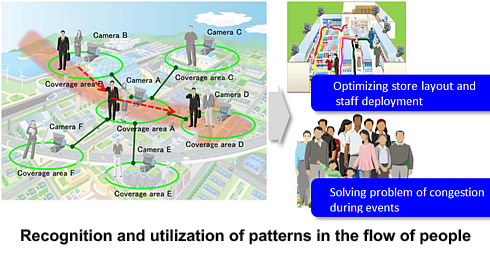
Using features that people have in common, Fujitsu Laboratories has devised person-recognition technology that extracts body-like shapes such as heads and torsos in low resolution images, and determines if the person is the same based on clothing colors.
Fujitsu focused on the fact that, even in low-resolution images, the head persists as a distinctive human characteristic that is unaffected by a person's posture or the angle from which the person is seen. Regardless of whether viewed from the front, back, left, or right side, the established characteristics of the head being a roughly elliptical shape and at the top of a person's body have the advantage of persisting even in low-resolution images.
The extraction process is as follows:
Focusing on head-shaped characteristics in the input image, extract head-shaped candidates. Because many similar shapes were detected, treating the lower ones as torso shapes makes it possible to accurately detect people even from low-resolution images.
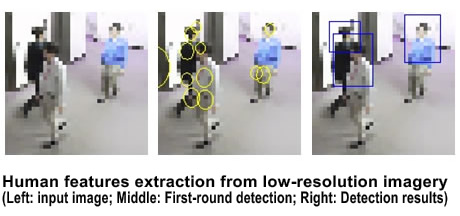
Based on the people detected in Step 2, the teqnique detects their relative proximity to the camera, beginning with the closest person, and updates the image of more distant persons to compensate for partially obscured areas of a body. This makes it possible to accurately detect even multiple, overlapping people.
Fujitsu says that the technology can independently recognize the heads and torsos of multiple people.
Fujitsu's technology makes it possible to recognize a person's movements between cameras.
By selectively extracting only the distinctive colors of a person's clothing, Fujitsu has been able to perform reliable person matching using low-resolution images.
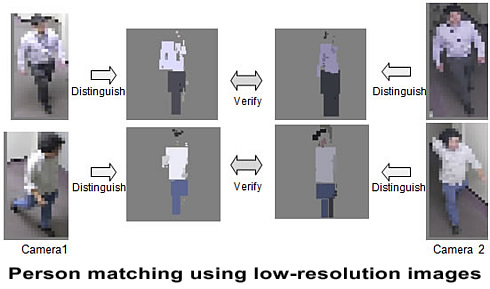
Fujitsu Laboratories performed an indoor trial, in which it was able to detect, in the flow of people, the paths of approximately 80% of the people.
As a result, when arranging merchandize or deploying staff inside a store, for example, it makes it possible to use surveillance camera images that respect the privacy of the people whose images are being recorded, and enables the use of images that do not identify individuals to improve customer service.
Fujitsu Laboratories plans to conduct more practical testing to improve detection accuracy, and aims for commercial implementation during fiscal 2015.


